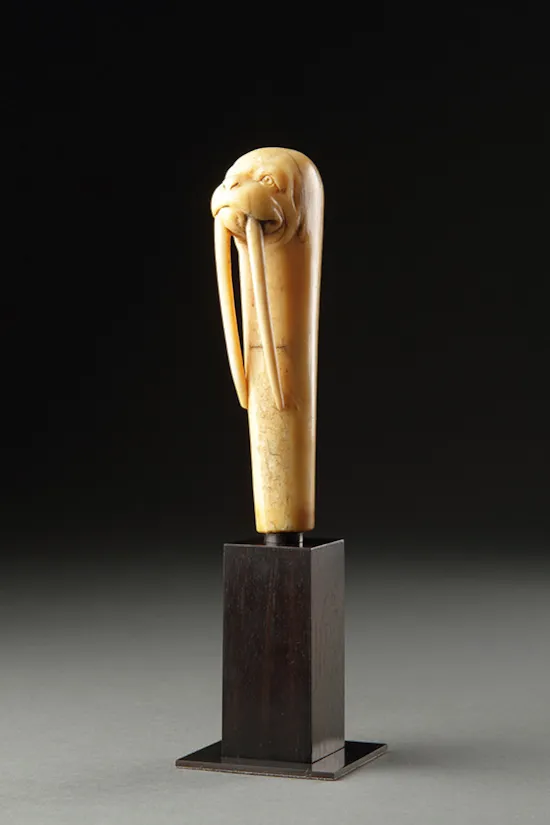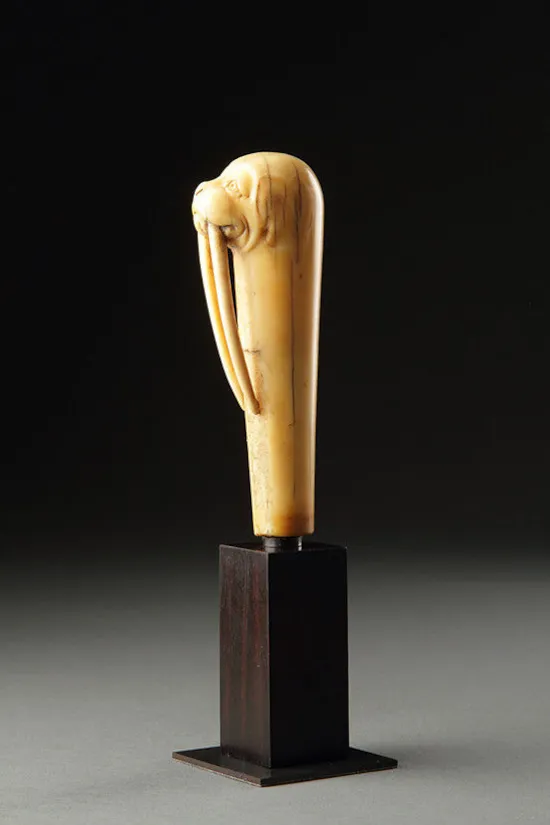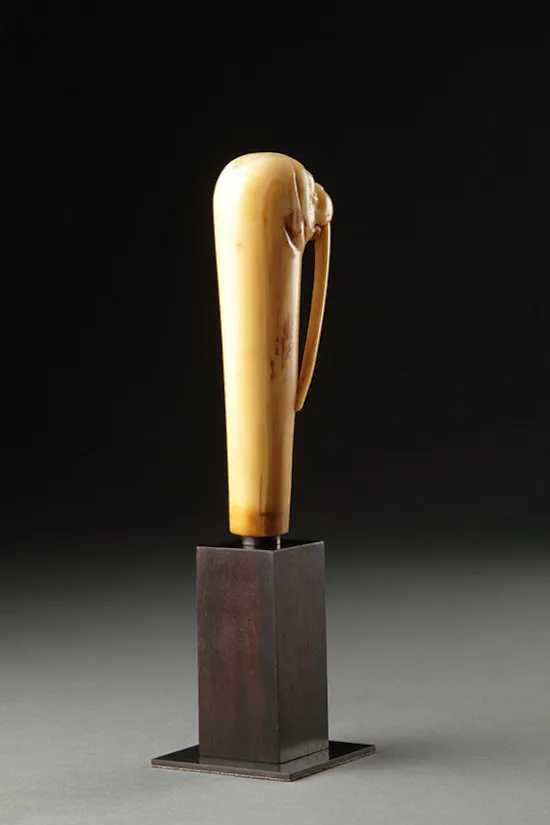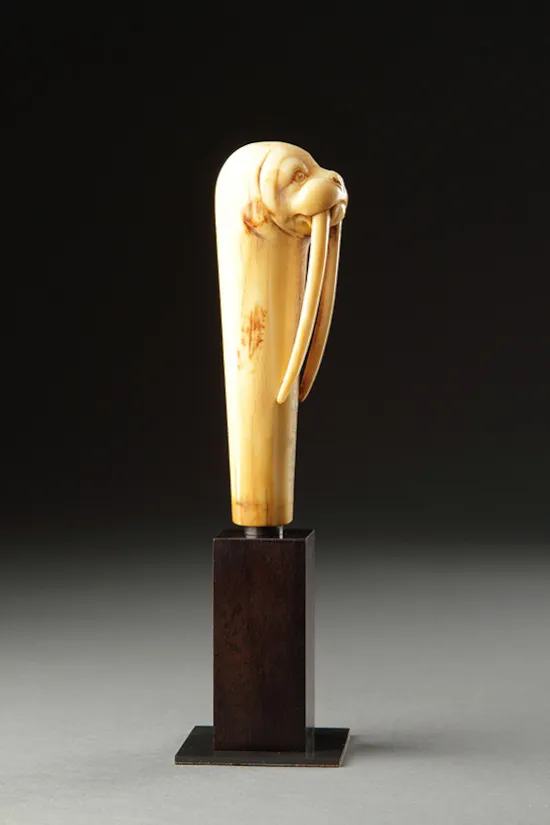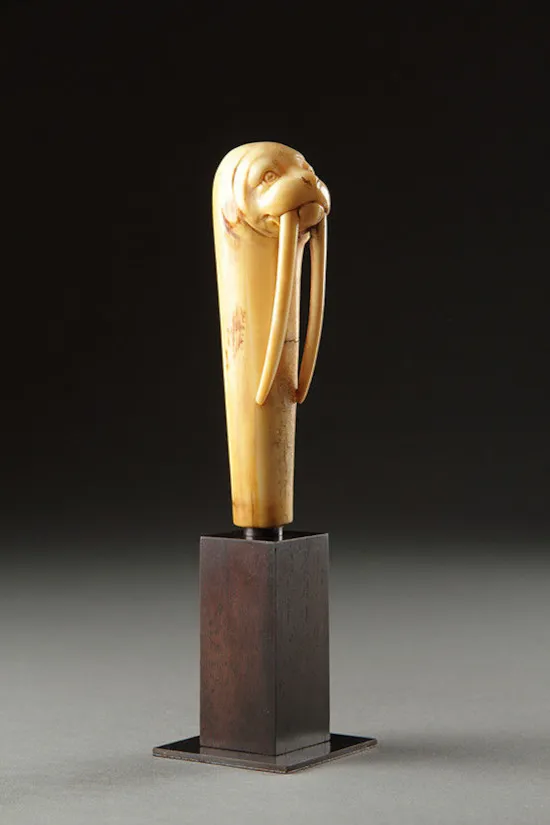Sailors Scrimshaw Walrus Tusk Cane
A Sailors Scrimshaw Walrus Tusk Cane Handle carved with the head of a large male Walrus
Probably American
Late 19th Century
Size: 12cm high - 4¾ ins high / 19.5cm high - 7¾ ins high (with base)
Probably American
Late 19th Century
Size: 12cm high - 4¾ ins high / 19.5cm high - 7¾ ins high (with base)
In the 1840’s the American whalers began in earnest to hunt the whale in Arctic waters. However, the whales found there had no teeth and so the scrimshanders used the ivory tusks of the walrus for their carvings. Ranging in size from 18 to 32 inches the tusks were used by the walrus for digging shellfish out of the sea bed to eat. In fact their family name ‘Odobenidae’ means ‘those that walk with their teeth’ as it stands on its head and moves slowly backward using its tusks and stiff cheek bristles to extricate the shellfish. The tusks are also used for climbing steep ice banks and for defence. The whalers often traded goods with the Eskimo to obtain walrus tusks which they knew as ‘morse’ ivory.
Sailors Scrimshaw Walrus Tusk Cane

SOLD
